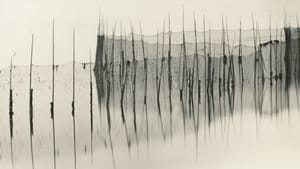Stay in the Loop
BSR publishes on a weekly schedule, with an email newsletter every Wednesday and Thursday morning. There’s no paywall, and subscribing is always free.
Lights on empowerment
The Delaware Contemporary presents ‘Focal Points: Women Advancing the Aperture’

Cultural institutions everywhere are celebrating the centennial of the 19th Amendment, examining the historic movement that empowered some American women with the vote. In Wilmington, the Delaware Contemporary—true to its mission—has mounted Focal Points: Women Advancing the Aperture, an elegant, eclectic exhibition that puts a literal and figurative modern lens on empowerment.
Fluidity and rebellion
This noncollecting museum showcases intriguing works by 14 very different photographers. Their works are displayed in a large, white, square gallery: not the most hospitable space for looking intimately at intricate imagery. But, while seemingly disparate at first, the show is subtly, almost surreptitiously unified by the eye of its curator.
Kathrine Page has chosen these resonant photographs that look outward or forward by gazing inward, often closely. Most of the 35 works are very newly made, with only a few that dip into the late 20th century. Coursing through the room is a sense fluidity and movement, with (in some cases) an undertone of rebellion.
Bursting from the frame
A number of the images deal overtly with textiles, clothing, or things that carry layered, tactile messages. Floating Dresses (1977) is Alida Fish’s haunting elegy to “a world of my own invention,” where folded period dresses seem longing to burst out of the frame that restrains them, an apt parallel for the suffragists. Virginia Lockman (“art is anywhere and everywhere”) offers the anthropomorphic Tree Sheath (2019), depicting unexpected movement and fluidity in an unyielding substance. And a signature image of the exhibition is Gigi Stoll’s haunting Maria Carla Boscono (2004), an actual fashion photograph created for Vogue Paris that carries more meaning than the dress it ostensibly displays.
These photographers work in a variety of processes, from historic gum bichromate and silver gelatin to modern inkjet and digital printing. But the image on the wall sometimes belies its creation. Paula Gately Tillman’s digital prints of three evocative salon interiors (from her 2006 series Venice is a Dream: A Childhood Memory) read like classic sepia-toned works from another age—images from a childhood visit to La Serenissima. Likewise, Stoll’s 5th Avenue (2016), a pigment print (on the very specific paper “Hahnemuhle photo rag 308 gsm”) mysteriously evokes the classic Parisian boulevard photos of another century.

Works on aluminum
Amie Potsic has two untitled works—topical, socio-political images of mannequins (from her 2000 Seduce Me series)—whose visual juxtapositions and contemporary sensibility come not from the expected digital process. They are historic-process silver gelatin prints on aluminum.
Several other artists here are also printing on aluminum. Alida Fish’s new multi-process work Seed Burst (2019) is the direct visual opposite of her textile image. And Rebecca Parsons has five small square 2019 digital pieces (all titled Detail) that are her first works on display in a museum.
Human/nature
Two highlights of the exhibition are photographers who poetically juxtapose the natural and the created worlds. In Laurie Beck Peterson’s large, powerful, and deceptively simple digital print Wagner Nest on Chair (2018), every detail of a bird’s intricate construction is celebrated by contrasting it with a smooth human-created wooden seat. And Lisa Tyson Ennis, who explores “the elusive passage of time and change,” exhibits two-toned silver gelatin prints with contrasting natural sensibilities. Anthurium (from the 2010 Frozen Flower Series) is almost geologic, while Fishing Weir, Study XX (2011) contrasts light and sea with human efforts to tame it.
The museum has positioned this exhibition as both a preview of and a companion piece to several centennial-celebratory events, including an auction where the artists’ works will be sold. But these photographs stand tellingly on their own, statements of personal empowerment through artistic vision.
What, When, Where
Focal Points: Women Advancing the Aperture. Through April 25, 2020, at The Delaware Contemporary, 200 South Madison St.(on the Riverfront), Wilmington. (302) 656-6466 or decontemporary.org.
The Delaware Contemporary’s facilities and galleries located on the ground level are fully accessible. When open to the public, artists’ studios are accessible via elevators.
Sign up for our newsletter
All of the week's new articles, all in one place. Sign up for the free weekly BSR newsletters, and don't miss a conversation.

 Gail Obenreder
Gail Obenreder